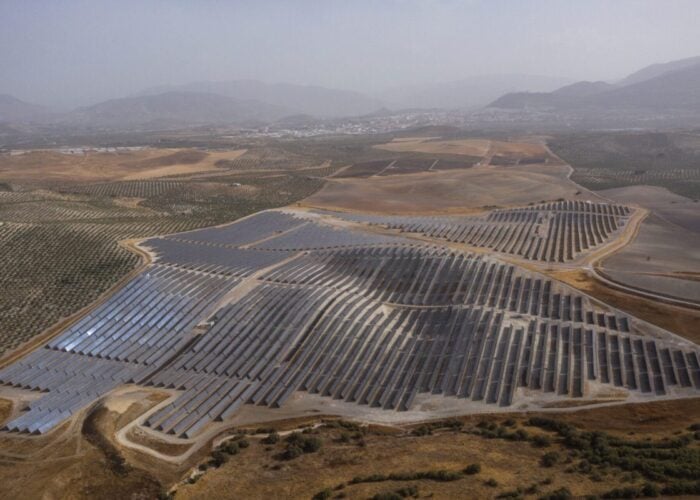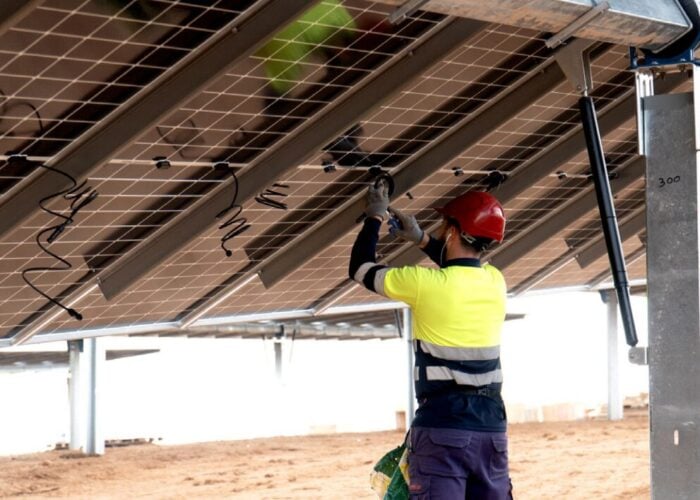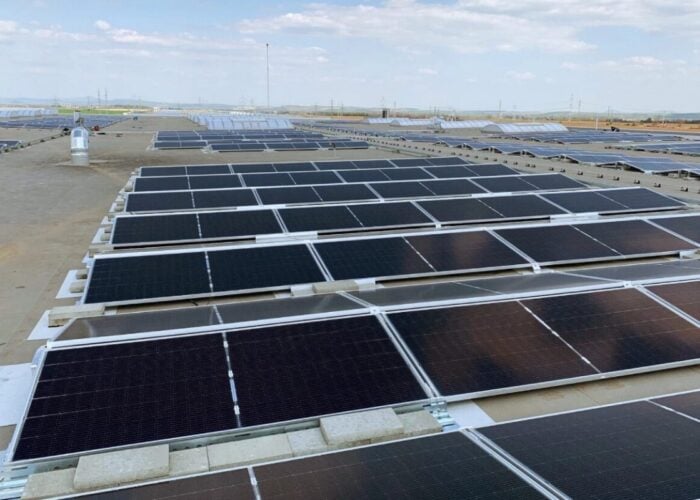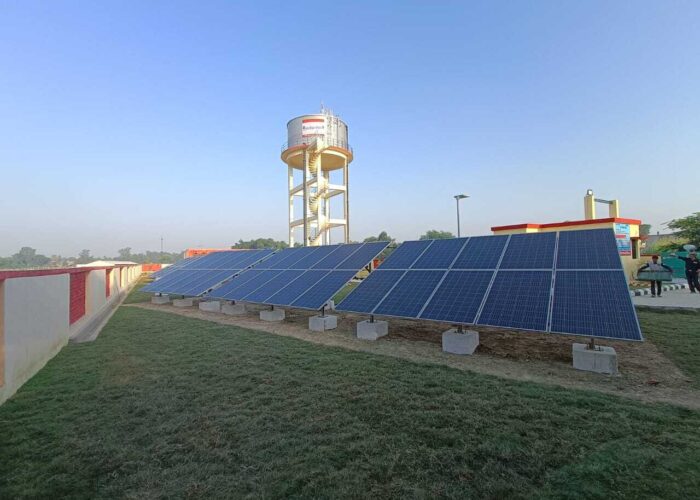Energy storage schemes, new projects, equipment innovations, implementing new incentives or saving current ones – these are the stories that dominate industry news I receive. Yet the five invitations in my inbox to O&M conferences are evidence the industry is waking up to the increasingly large business opportunity for maintaining and optimising the projects we’re all furiously building.
With 178GW of installed solar capacity globally at the end of 2014 and another 55GW forecast for installation in 2015, it’s unsurprising companies are looking at the operational market for new opportunities. At a recent solar asset management conference in Europe, a financier told me his solar projects are generally over-performing expectations, but they are requiring more maintenance than expected. Increasing maintenance needs are fueling specialty asset management companies, performance monitoring software providers, reinsurance providers, companies for panel cleaning or snow removal and a host of other new market offerings.
Try Premium for just $1
- Full premium access for the first month at only $1
- Converts to an annual rate after 30 days unless cancelled
- Cancel anytime during the trial period
Premium Benefits
- Expert industry analysis and interviews
- Digital access to PV Tech Power journal
- Exclusive event discounts
Or get the full Premium subscription right away
Or continue reading this article for free
Generally unless something catastrophic happens, like setting your inverters on fire by overloading them, the first calls for improved maintenance come after a low irradiance quarter. Not all plant operators are aware of how much solar resources can vary from the long-term average on a monthly basis, which can lead to questions of whether the 10% drop in energy seen last month is due to weather or an equipment issue.
For example, significant performance decreases of 5-10% were experienced in Europe’s largest solar markets throughout H1 2015 due to sub-par solar irradiance levels and harsh weather conditions. Vaisala’s solar performance maps highlight this significant variability in resource levels and emphasise a clear requirement for asset owners and project operators to regularly evaluate and address plant performance. Following extreme weather patterns in early 2015 in Europe and the United States, including heavy snowfall, hail and high winds, Vaisala also has stressed the importance of effectively deploying maintenance and repair crews to mitigate the impact of associated production shortfalls.
Conducting thorough weather analysis is essential for understanding in the short term whether a project is performing as it should be, based on the available resource. It also allows both distributed and utility-scale generators to effectively deploy maintenance and repair crews when problems — such as inverter issues or heavy snow on panels — reduce production when resource data clearly show the sun was shining.
As the winter approaches, operators should reflect back on early 2015 when extreme snowfall in the north-east United States and south-east Canada led to unexpected challenges for solar plant operators. The region’s solar irradiance map doesn’t suggest exceptional conditions. In fact, Q1 2015 was a fairly sunny period as compared to long-term averages and a few cloudy, snowy days are to be expected in February. That’s why no low irradiance anomalies appear. What our map doesn’t account for is what really set these storms apart – extremely low temperatures and record February snowfall that refused to melt.
PV panels cope easily with light snowfall, which melts naturally as the panels warm up. However, when snow cover is thick, the panels do not warm up sufficiently to shed the snow and it stays around much longer.
In this situation, operators usually send a maintenance team in to sort out the problem manually. While, in principle, this works well, operators are often too quick to implement it. There are several factors to consider before assigning maintenance funds to solutions that may fail to address the issue. For example, underperformance that may seem snow-related could also be related to faulty equipment.
To determine whether a problem is definitely snow-related and not a result of equipment failure, operators can do one of two things. If on-site they can simply look at the snowfall level. Remote operators can use an on-site weather station pyranometer to check irradiance measurements and other weather variables. These devices are likely to show erroneous readings in extreme weather, but will at least indicate problems with weather as well as power production and alert operators to the possibility of heavy snowfall.
For a second reference or at sites without weather stations, an ongoing weather data feed can be supplied from providers of modelled datasets. Weather data feeds are then paired up with any existing monitoring solutions and provide critical information in underperformance assessments.
To determine the type and thickness of snowfall on panels, the most obvious solution is a simple ruler but, again, if a maintenance team is remote, alternative methods have to be found. In these situations, we recommend the use of a road sensor – a piece of equipment commonly deployed in other sectors, but designed specifically to measure snow and ice.
Vaisala operates sensor networks for road authorities in areas like the north-east US where knowing the details of snow and ice conditions allows for mitigation efforts like salting or sanding roads. While it requires some creative thinking, these same sensors also measure snow and ice levels on PV panels, allowing operators to make informed maintenance decisions.
Even if an issue is proven to be snow related, calling in a maintenance team immediately is not always the most cost-effective solution. The weather may change dramatically over the next few days and if panels are covered in heavy snow the day after being cleared, the cost of sending in a maintenance team was not money well spent. On the other hand, there may be heavy rain on its way, which could clear the snow without the need for costly manual labour. Costs depend on the system and its location, but as an example a 2.5MW system in Massachusetts would make roughly US$3,100 on a sunny day in February. The cost for a team to remove the snow from the panels with a hot air blower would be US$2,500.
Specialised forecasters help operators make the most cost-effective decisions in these situations with day and week-ahead forecasts tailored to the site, including temperature and precipitation predictions of incoming rain or snow cover.
Forecasters also usually have historic datasets covering irradiance and weather variables for the last ten to 20 years. This gives operators realistic expectations at their solar park. Vaisala, for instance, has snow data from 1997 onwards in the US and can monitor trends to predict the snowfall in any given part of the continent. That historic data can also predict weather conditions a season ahead when climate signals are very strong such as with the El Niño conditions expected in North America through Q1 2016.
Extreme weather necessitates a robust understanding of the root causes behind production deviations. It also makes it even more critical for O&M teams to make wise budgetary decisions and anticipate the kinds of conditions in store for them. Even when the weather is not extreme, operators need good performance benchmarks to identify problems as they creep up and not only after they become major headaches.
I’m excited to see growth in operations management and hope recent lessons learned will drive better implementation and new innovation. For all you project operators, I’m looking forward to seeing you at the next O&M conference — or energy storage — whichever comes first.






